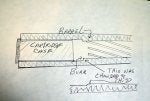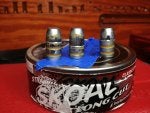A few of you MO members already know this topic is of interest to me. So now I’m soliciting feedback from the general but experienced population.
Sometimes we have not achieved the results we want(either with accuracy or with leading) after considerable adjustments in size, ogive shape, velocity, lube, hardness and seating depth (or filling the throat) and I’m sure many have resorted to attacking the problem where it resides in their chamber. I know several highly recommend lapping but I’m curious about more of the pinpoint resolution aimed at the throat or chamber overall.
I’d appreciate reading input from anyone with that experience here on MO from anyone who eventually reached that point of finding chamber or throat reaming to be necessary (any caliber)?
Some questions I have:
Did you settle on that approach after a chamber cast or throat slug, or after repeated failure to correct an accuracy or leading problem?
Did you use a throat reamer? A full bodied chamber reamer?
How did you settle on the reamer - did you purchase or rent it?
Were you able to specify the throat angle?
Did you do it by hand or use a lath?
Any description of the process, cautions or tips, whatever you want to offer?
Did it cure your problem?
Supplied is an excellent diagram by JBledsoe (without his permission – thanks Jim) of one facet of throat problem.
Thanks in advance to any contributors!
Sometimes we have not achieved the results we want(either with accuracy or with leading) after considerable adjustments in size, ogive shape, velocity, lube, hardness and seating depth (or filling the throat) and I’m sure many have resorted to attacking the problem where it resides in their chamber. I know several highly recommend lapping but I’m curious about more of the pinpoint resolution aimed at the throat or chamber overall.
I’d appreciate reading input from anyone with that experience here on MO from anyone who eventually reached that point of finding chamber or throat reaming to be necessary (any caliber)?
Some questions I have:
Did you settle on that approach after a chamber cast or throat slug, or after repeated failure to correct an accuracy or leading problem?
Did you use a throat reamer? A full bodied chamber reamer?
How did you settle on the reamer - did you purchase or rent it?
Were you able to specify the throat angle?
Did you do it by hand or use a lath?
Any description of the process, cautions or tips, whatever you want to offer?
Did it cure your problem?
Supplied is an excellent diagram by JBledsoe (without his permission – thanks Jim) of one facet of throat problem.
Thanks in advance to any contributors!














